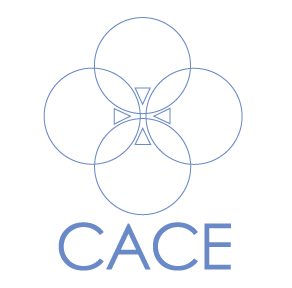Oppressed, Oppressor, Substitute, Observer

One of the central tenets of experiential education is that involving the body of the learner broadens and deepens the nature of what is learned. I participated in this year’s faculty seminar to gain additional ideas for incorporating new forms of collaborative, embodied learning in HNGR activities and courses, both before and after students’ internships. One of the many memorable exercises of this seminar which I will certainly incorporate into my teaching involved learning new ways to convey, to understand, and to communicate experiences of oppression.
For this exercise, in clusters of 4-5 people we each thought of a specific situation in which we have felt the weight of oppression. Then, we shared our situations with our clusters. Next, we created bodily poses to represent that feeling from our own stories. While in this pose, 1-2 other group members positioned themselves in the role of the oppressor(s) in that story, necessarily making physical contact with the oppressed. When this pose was done, the person in the role of oppressed slipped out of place and a substitute slipped in to that spot, giving an opportunity for the oppressed figure to see the full scene, and to make corrections or suggestions for how the story was conveyed. The oppressed and the substitute then switched places. One person served the role of observer throughout the whole process of representing that story in a physical way. We repeated this process for each person’s situation, so we each had opportunities to be in each role.
This activity drew out remarkable reflective learning on oppression, and our various related roles: as oppressed, as oppressor, as substitute to allow one being oppressed to step out and to gain perspective on the situation, and as a silent observer of the drama of oppression which is so often played out before our eyes, in everyday ways and spaces. The hurtful situations being portrayed were not dramatic or particularly newsworthy, or physically violent; rather, they included a range of sincere, well-intended actions and “people just doing their jobs” that were received as micro-aggressions taking place in churches, over email, and in offices. And yet, they were violent acts against the dignity of the oppressed person.
Being in each of the four roles provided much food for thought. While some people reported having difficulty identifying a moment of oppression in their lives, others had trouble choosing among the many, recent instances they could have selected. Most oppressed poses could be characterized as closed, diminutive or under, and covered in some way—an arm across the eyes, or cowering below the hovering presence of an oppressor. Taking the role of oppressor was very uncomfortable; we do not like to see ourselves in that light. Yet, holding the pose for an extended period, and having my pose modified to be even more overbearing on my colleague forced me to reflect on times in which I was an instrument of oppression toward others, even inadvertently—and how I might also justify or diminish the oppressive effects of my actions on others. As oppressor, I shied away from actually physically touching the oppressed person until I was reminded of the rule to do so; this reminded me of how often oppression does happen from a distance—and how oppression also serves to create distance between people. When playing the substitute, I pondered the place for people who stand in dangerous margins with people who are subjects of oppression, and how putting oneself in the physical place of someone who is suffering is qualitatively different from observing it, even commenting on it, without getting one’s own body involved. Finally, the observer is the only figure who walks around the pose, seeing from all angles, attentive to the interactions and changes throughout the making of the scene. It was while discussing the role of observer that some group members realized that they had been present at their colleagues’ scenes of oppression—as non-intervening observers, rather than as active participants.
In closing, we had the opportunity once again to take the oppressed pose, and this time our oppressors could change their poses to be those of healing, recognizing dignity, and bringing peace and restoration to the situation. In these models, the oppressed changed toward postures of openness, looking upward, and showing freedom and forward momentum. It was compelling to see how a different choice in positioning oneself toward another, of standing beside rather than above, or lifting her or his arms rather than boxing them in, made such a notable difference in the outcome. Christ-like postures we know about include those of arms outstretched, of being low with little children and sick people, and of washing feet. After this seminar, I will be more attentive to how postures—physical and otherwise—affect the dignity of another. I believe that teaching through this type of exercise to my students in HNGR will better equip them to understand their own choices of posture, expressions of power of various types, and responses to oppression that they observe on campus, in their internships, and beyond college.
Contact Us
Center for Applied Christian Ethics
117 Blanchard Hall
501 College Ave
Wheaton, IL 60187
